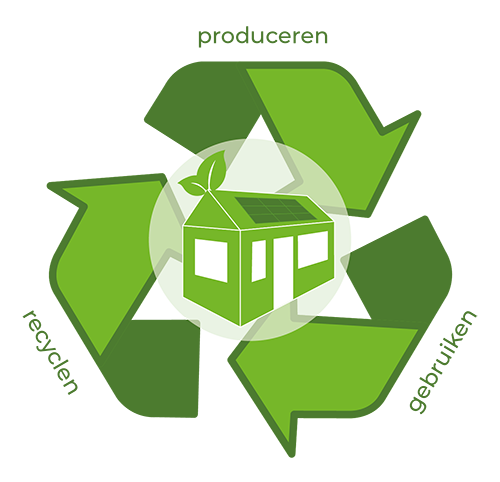Document •


By Ruud Sprock, sustainability consultant
In 2016, the government launched the ‘National Circular Economy Programme’, with the objective that by 2050 the economy runs 100% on reusable (=secondary) raw materials, and 50% reusable raw materials by 2030.
In concrete terms, this means that within less than 10 years, our sector must replace 50% of new (primary) raw materials with reusable (secondary) raw materials. A challenge that should not be underestimated. Sustainable demolition will make an important contribution to this.
One of the initiatives of the construction sector to meet this challenge is the BREEAM Assessment Guideline (BRL) ‘Sustainable Demolition and Dismantling’, which was created in 2013 at the initiative of the demolition sector.
Demolition projects have already been certified according to this BRL. The Gorleaus complex of the University of Leiden is one of the projects being demolished according to this BREEAM variant, with the ambition of achieving the highest possible score, that is, as circular as possible.
Before I elaborate on this BREEAM Sustainable Demolition and Dismantling, I will first give a compact definition of the concept of circular economy. It is about thinking in terms of production cycles, repairing as much as possible, energy-efficient production, improving the environment and the climate, and paying attention to welfare. How this BREEAM version interprets this is described in the text below.
BREEAM Sustainable Demolition & Dismantling consists of a preparation and an implementation phase. In the preparation phase, the emphasis is on defining a sustainability ambition, making an inventory of materials present in the building and giving careful thought to and planning the demolition work in advance. In the implementation phase, the focus is on carrying out the demolition work, monitoring and demonstrably realising the sustainability score established in the preparation phase.
The method has three focus areas, each with sustainable requirements. Some requirements are mandatory in order to qualify for a certificate at all. Other requirements are optional and contribute to a higher sustainability score.
Firstly, attention to the environmental impact. The method encourages demolition with a focus on reuse of high-quality materials and reuse of products at product level. (This is already happening in some new construction projects).
In this way, demolition waste becomes a valuable secondary raw material that must reduce the use of primary raw materials. At the same time, the method encourages a reduction in energy consumption, CO2 and NOX emissions from demolition and transport equipment. Reduction of waste water during demolition is also a point of attention, as is the preservation of flora and fauna on the demolition site.
Secondly, the method pays attention to reducing nuisance for the environment around the demolition site. Vibration-free, low dust and low noise demolition is encouraged. Reducing traffic nuisance caused by transport to and from the demolition site contributes to a higher score.
Thirdly, attention is paid to people. The safety and health of the employees involved in the demolition process are of paramount importance. And, the method promotes social return by hiring long-term unemployed people during the demolition process.
My experiences with BREEAM Sustainable Demolition & Dismantling are extremely positive. The method offers concrete handles for what sustainable demolition exactly entails. But much more importantly, the method challenges us to look at the economic added value of demolition work from a different angle.
In today’s linear thinking on real estate, demolition is the end station of a finished building – demolition is a cost item. In circular construction, demolition is the beginning of a new building, constructed with as many reusable materials as possible – demolition makes money.
Isn’t that an additional argument for a switch to the circular economy?
Navigation